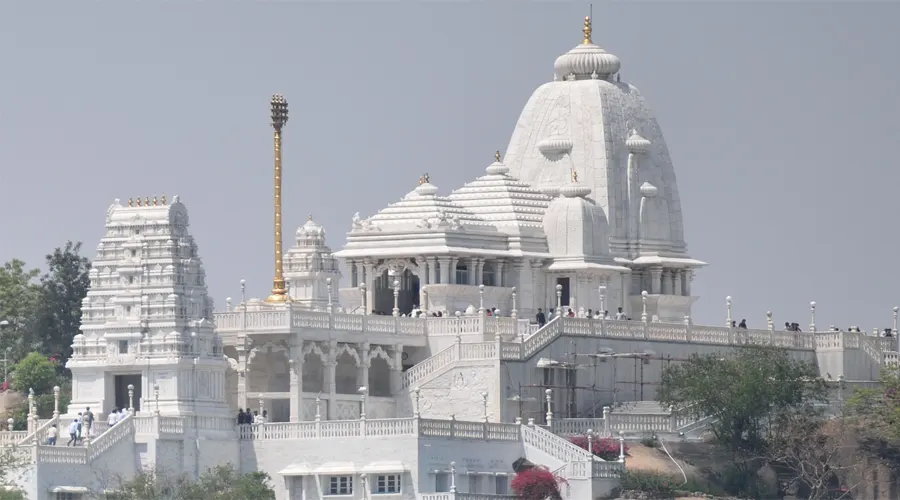Mecca Masjid Hyderabad
One of the oldest mosques in the city, the Mecca Masjid in Hyderabad is one of the largest Masjids in India. This revered shrine was commissioned by Muhammad Quli Qutub Shah, the fifth ruler of the Qutub Shahi Dynasty in the year 1614, while the construction saw completion in the year 1694. It is believed that he laid down the foundation stone of the edifice, and the arch embellishments over the main sanctum are made from the soil of the Holy Land of Mecca.
It is due to this reason that it is called the 'Makkah Masjid' as well. With a capacity to accommodate as many as 10,000 people at any given time, the mosque also houses a hair belonging to Prophet Muhammad that has been safely secured in the premises of the mosque. With its intricately designed architecture, rich history, and religious significance, the Mecca Masjid is indeed a humbling sight to behold.
History of Mecca Masjid
The construction of the historic Mecca Masjid began in the year 1614 by Muhammad Quli Qutub Shah, the 5th leader of the Qutub Shahi Dynasty. The massive construction was supervised by chief mason Rangaiah Choudhary and engineer Mir Faizullah Baig.
This majestic mosque is named after the Grand Mosque in Mecca, as the bricks used for its construction were manufactured from the soil, which was brought from the sacred Mecca city. It is also believed that a hair strand belonging to Mohammed Prophet was enshrined in a room in the mosque’s courtyard.
A large contingent of masons numbering 8000, worked day and night to complete this gigantic monument. 500 – 600 laborers toiled for 5 years to quarry the single piece of granite, out of which 3 arched facades were carved out. It took 77 years to build the mosque. It was completed in 1694 during the Mughal Emperor Aurangzeb’s regime
The canopied building inside the mosque houses the tombs of all Asif Jahi rulers (Nizam rulers) except 1st and the last Nizam Mir Osman Ali Khan.
Architecture of Mecca Masjid
Mecca Masjid depicts the distinctive Indo-Islamic architectural stamp with its intricate minarets, pagodas, arched facades, floral motifs, etc. It bears a resemblance to the architecture of the Golconda fort and adjacent Charminar.
A most revered place for the Muslim fraternity, the humungous prayer hall which measures 75 ft in height, 180 ft in length, and 220 ft in width accommodates more than 10,000 worshippers at the same time. The roof of the hall is buttressed by 15 elaborately designed arches. While the 3 sides of the hall have 5 arches each, the 4th side of the wall has a Mihrab.
The 2 octagonal columns that robustly support the mosque are carved out of single granite stone. The doors and arches display the inscriptions of the holy Quran. The Belgian crystal chandeliers hanging from the ceiling of the mosque increase the charm of the interior multifold.


























